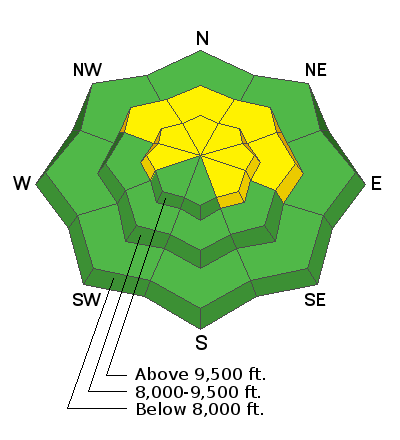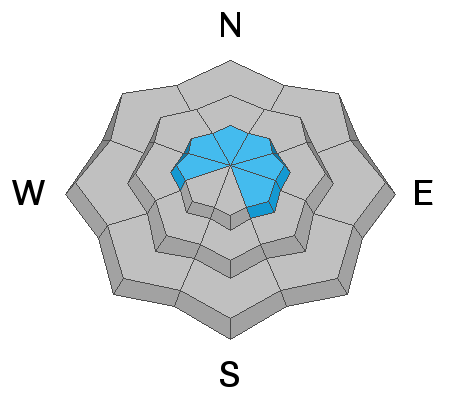Tomorrow, Tuesday December 11th at 6:30 p.m. at the Park City Library: Learn about the "Current state of the snowpack... how did we get here? and where are we going." 1255 Park Avenue, Park City, Utah. Presented by the Park City Professional Ski Patrol Association and the Utah Avalanche Center.
The inversion continues this morning with colder temperatures at low elevations and warmer temperatures at higher elevations. Temperatures at some trailhead elevations are in the low teens F while at 9000 and 10,000 feet temperatures are in the upper 20's and low 30's F. Winds this morning are averaging 7-10 mph gusting 15 mph from the WSW.
Today will have more sunshine and temperatures in the mid to upper 30s F. Winds could increase some this afternoon as a weak storm system approaches and the ridge of high pressure moves east. This storm system will not deliver any measurable snow but should help improve valley air quality.
The snow surface has been getting warm and even a little damp on south facing slopes. It remains dry powder on shaded slopes, and some people have been finding a little bit of faceting (weakening) in the surface snow as well as some surface hoar growth (essentially frost on top of the snow). For now this faceting and surface hoar growth improves the riding conditions.
On Saturday, a skier was caught, partially buried, and injured in an avalanche in upper Porter Fork of Mill Creek Canyon (NW aspect, 9500 feet, 45 degree slope angle). The avalanche was confined by terrain and was only about 30 ft wide but ran 600 feet vertical. They were the second person on the slope and it broke about 100 ft above them. They were able to hike out under their own power but one ski was broken in half. Read more details
HERE.
Otherwise, the only avalanches triggered by ski areas were in steep, rocky terrain as ski patrols hunt for remaining pockets of unstable snow.
There were about half a dozen great observations from yesterday. Read them
HERE.
The photo below shows the path where Saturday's avalanche carried the skier with young trees in the path near the bottom.











